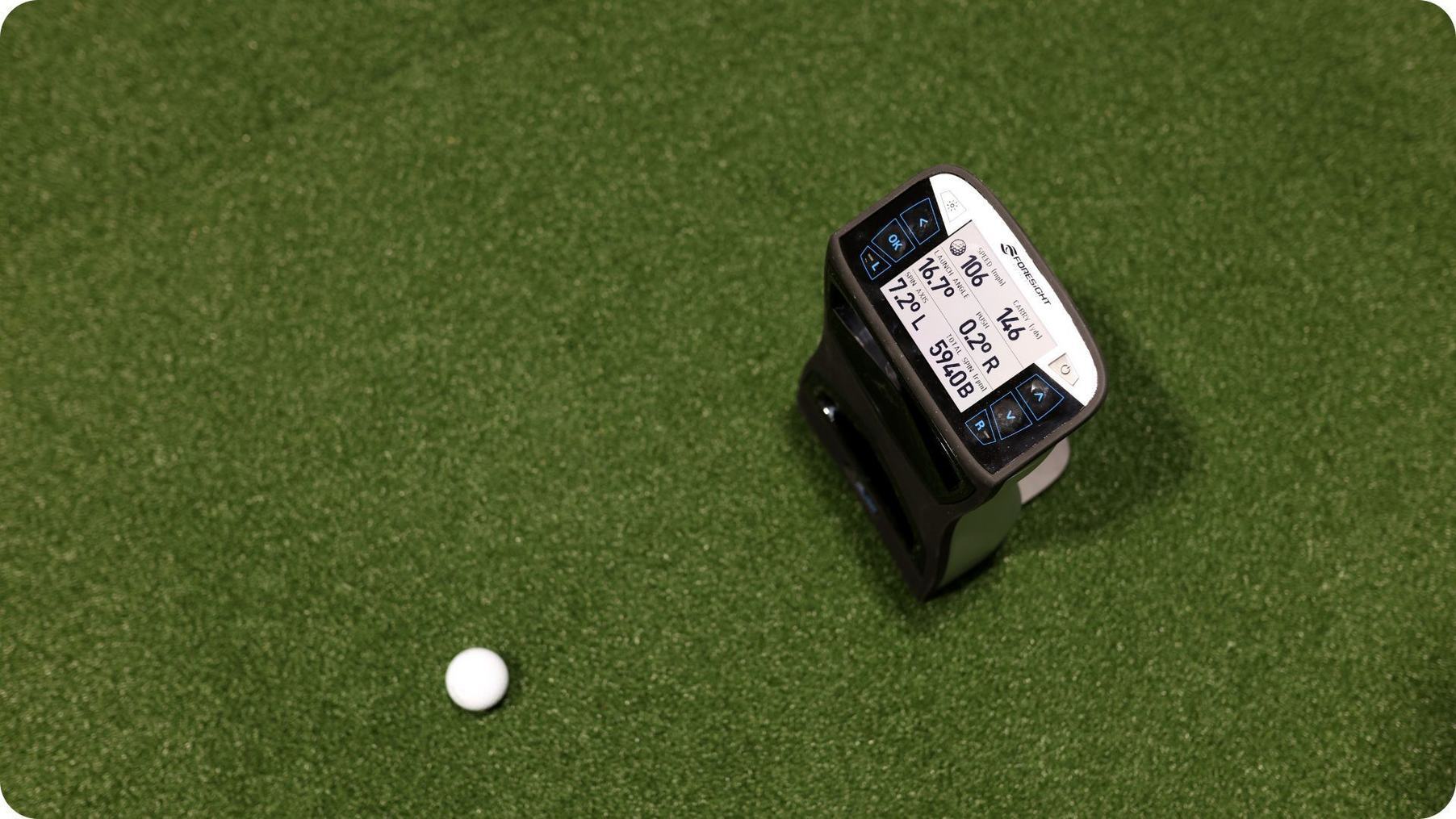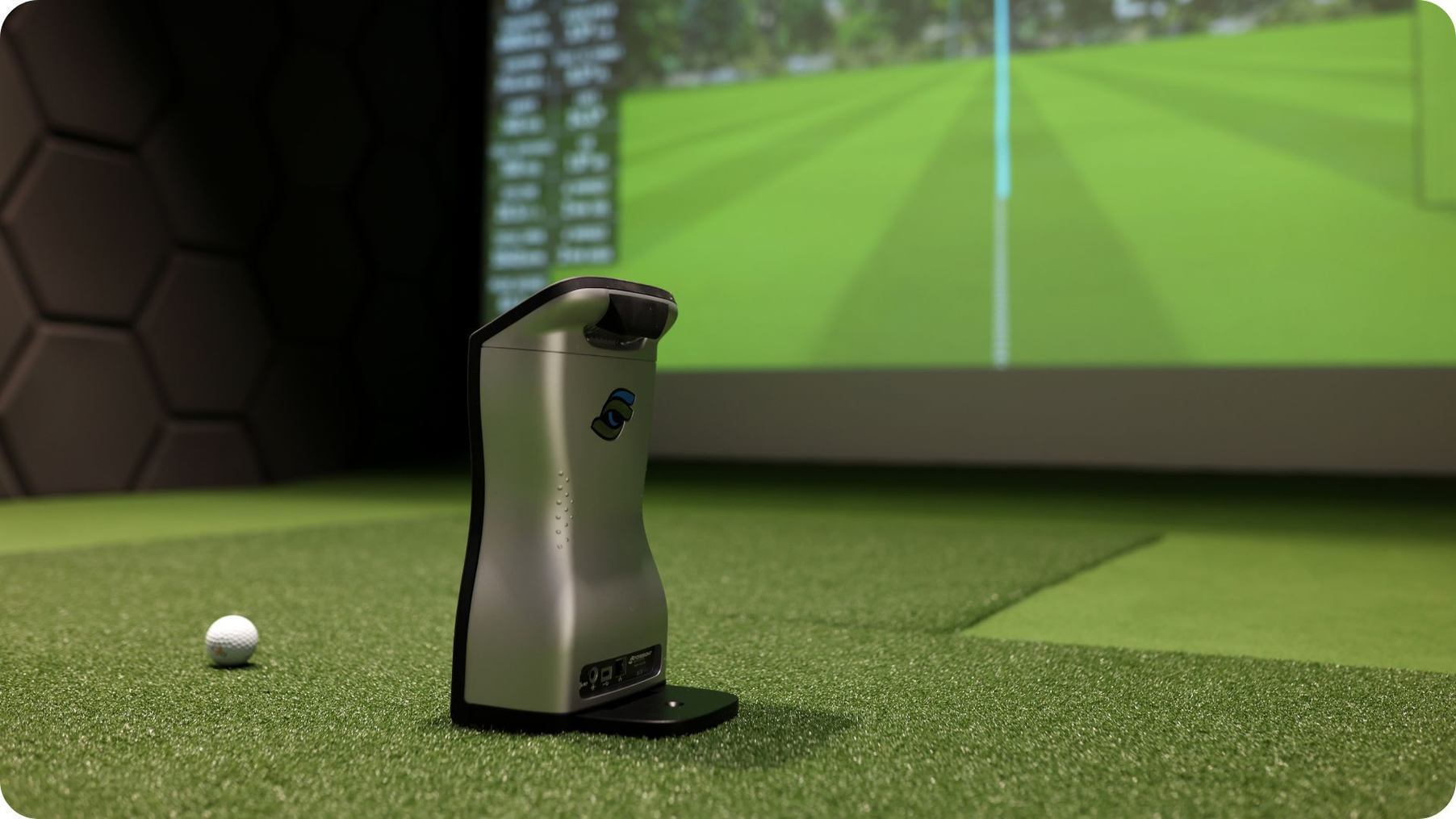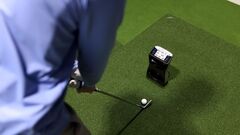If you go to any professional tournament and spend time watching the players warm up before their rounds, you’ll notice most of them will have a launch monitor close by.
The pro at your club might have invested in a launch monitor to use during lessons, and you’re undoubtedly likely to have come across a launch monitor if you have tried new golf equipment at major retail outlets.
Launch monitors are becoming increasingly popular because they provide us with insight into the game, which we couldn’t have imagined before.
The array of data and its potential applications are staggering when you consider that launch monitors capture the moment of impact between the clubface and the golf ball, which is measured at 1/200th of a second.
Launch monitors are an integral part of any club fitter’s business. Investing in a high-end launch monitor is a must.
There is an expression that says knowledge is power, and when it comes to launch monitors, they help to provide all the knowledge you need to see an improvement in your game by being custom-fitted for your golf clubs.
Our guide will help you understand more about launch monitors and why they can help you make informed decisions about your next addition to your golf bag.
We’ll help you to understand:
- Understanding The Numbers: What Are The Key Metrics?
- What Those Numbers Mean In Practice
- How We Use A Launch Monitor In A Club Fitting Session

Understanding The Numbers: What Are The Key Metrics?
Before we delve into the key numbers a launch monitor produces, let’s take a minute to give a brief overview of what a launch monitor is.
A launch monitor is a device that provides instant data after you make contact with the golf ball and will provide you with information such as:
- Carry and overall distance
- Club head and ball speed
- Launch angle and spin rate
We’ll look at these metrics in more detail shortly.
There are two types of launch monitors: one is radar-based, and the other is camera-based.
The radar-based launch monitor utilises radar technology to track the golf ball's flight and perform the necessary calculations to provide all the relevant data.
A camera-based system takes high-speed imaging at the moment of impact to measure the critical ball data.
The two systems differ significantly in their setup. A radar-based launch monitor will be positioned behind the golf ball. In contrast, a camera-based launch monitor is positioned next to the ball, allowing the cameras to record the moment of impact.
The camera-based system is ideal for professional club fitters because it can measure the clubface position more effectively at impact.
Now that we’ve cleared that up, it’s time to examine the key metrics in more detail.
We’ll split the data points into two areas:
- Ball Data
- Clubhead Data
Ball Data
Ball speed - an easy one to start with. Ball speed is a measure of how fast the ball accelerates from the face and is measured in miles per hour.
Launch angle - measures the vertical launch of the golf ball post impact relative to the ground. If the ball is teed up for a driver, the ground is deemed to be level with the ball on the tee.
Spin rate - measuring how fast the ball spins post-impact and is measured in revolutions per minute (RPM). Spin rate is related to other factors such as clubhead speed and angle of attack.
Spin Tilt Axis - measures side spin, which affects how straight the golf ball flies. Spin tilt access is measured in degrees. Zero degrees present a straight ball flight; ball flights measured in positive degrees mean the ball spins to the right, and negative degrees mean the shot is going left.
Clubhead Data
Clubhead speed - how fast is the club head moving when it makes impact with the golf ball.
Angle of attack - records if the club head is travelling on a downward or upward path at impact, and is measured in degrees.
Smash factor - measures the effective energy transferred from the club face to the golf ball at impact. The smash factor is calculated as ball speed divided by club head speed. If you swing the club head at 100 mph and the ball speed is 150 mph, your smash factor is 1.5. Missing the sweet spot of the club head will reduce the smash factor.
Club path - tracks the club head approaching the ball from inside or outside the target line and is measured in degrees. The target line is a straight line drawn from the back of the golf ball, assuming the golf ball is aimed at your intended target. The bigger the number, the more extreme the club's path into the ball.
Delivered lie angle - is the club head’s toe or heel raised at impact, assuming that the club’s sole was lying flat at address. Toe or heel up at impact can relate to the quality of your ball striking.
Impact loft - do you add or remove loft from the natural loft of the club head at impact? Adding or removing loft will impact spin rates, launch angles, and carry distances.

What Those Numbers Mean In Practice
If some of what we’ve just discussed still sounds a little complicated, let’s put it into some real-world scenarios for you.
If you generate a lot of club head speed, you’ll hit the ball far because that club head speed will generate high ball speed.
That’s the easy part to understand.
You could lose distance even if you do have a lot of club head speed because you could be imparting too much spin on the ball, which affects carry distances and trajectories.
Even with high club head speed, you can lose distance if you struggle to find the middle of the clubface; you’re not generating maximum ball speed because the efficiency of your ball striking is poor.
The opposite can be said if you haven’t got a lot of club head speed. You can struggle to gain maximum distance because you aren’t generating sufficient spin numbers to launch the ball properly and keep it in the air long enough.
Inconsistent ball striking will also rob you of any distance because you're not getting the maximum ball speed compared to a centred strike.
You can be wildly inaccurate with your shots because you have an extreme out-to-in or in-to-out path with your club head into impact.
The big slice is caused by an out-to-in swing path, coupled with an open clubface at impact, which imparts side spin on the ball, creating the tell-tale ball flight.
Struggle with hitting it straight left? Your club head is still likely to be out-to-in, but your club face will be square or closed on that path if you are right-handed.
Another way you can hook it is if your club is coming too much from the inside-to-out path, and you close the club face at impact, imparting hook spin on the ball if you are a right-hander.
If you struggle with blocking your shots out to the right and you are right-handed, the club face is still likely to come too much from the inside. The block comes about because the club face is square or slightly open on that path.
Knowledge is power, and by working with a launch monitor, we can quickly understand why your bad shots occur and create a solution by fitting you with golf clubs that will help improve those shots and enable you to create good ones consistently.

How We Use A Launch Monitor In A Club Fitting Session
So, how does a custom-fitting session help you improve your golf game?
Golfers who come for fitting sessions generally want to improve distance and accuracy or just get more consistent throughout their golf bag.
Gaining more distance off the tee comes down to creating the proper launch and spin rates for your swing. The launch monitor will tell us what your launch and spin look like with your existing driver. Through the launch monitor, we can also accurately determine your club head speed and angle of attack.
Once we have a good understanding of those numbers, we can start building trial clubs, which we can subsequently measure for signs of improvement.
If you don’t have a lot of club head speed, we might consider a high MOI or standard driver head, such as the TaylorMade Qi35 Max or the Ping G440. We can try different loft combinations to help improve launch and spin rates, coupled with a lighter shaft, to enhance carry distance and give you a few extra mph.
Faster swingers may need to reduce loft, so a low-spin model like the Titleist GT4 Driver or a Wilson DYNAPWR LS Driver could be a good match, coupled with a Fujikura Ventus Black, which is specifically designed for faster players.
Fairway wood and hybrids can come down to creating consistent distance gapping or optimising your setup to attack par fives, long par fours and threes with more lofted woods or hybrids offering higher trajectories and softer landings.
Distance gapping is crucial in your iron play; plus, if you want to build the perfect combo set, we need to understand where you can make the switch from one iron model to another while keeping the numbers consistent.
Mastering your wedge game comes down to having the proper wedge setup that also creates consistent distance gapping while giving you enough flexibility around the greens.
Launch monitor data can also help us accurately determine the correct bounce and grind for your wedges by determining your angle of attack, which we can ascertain through the launch monitor.
Launch monitors provide us with more detailed information that we can utilise to match you with your perfect club setup. Understanding your delivered lie angle can help us determine whether you would benefit from clubs that are more upright or flatter than standard, based on how you deliver the club head at impact.
Launch monitor data is incredibly useful, but we place just as much importance on your feedback during a fitting session.
How a trial club looks and feels is equally important in giving you confidence on the course.
Every step of the way, we’ll ask you for your input on how a recommendation looks and the feedback you get from each strike.
Launch monitors provide us with a level of detail we have never had access to before in golf.
In the split second that the club head is in contact with the golf ball, we have demonstrated the wealth of data that a high-quality launch monitor can capture.
At Nine By Nine Golf, we rely on the GC Quad launch monitor because it provides the most accurate picture of the club head's orientation leading up to and during contact.
This extra detail is crucial when it comes to accurately fitting any level of golfer for new clubs.
Book a custom fitting session at Nine By Nine Golf, and we’ll fit you for the golf clubs that will help take your game to the next level.
